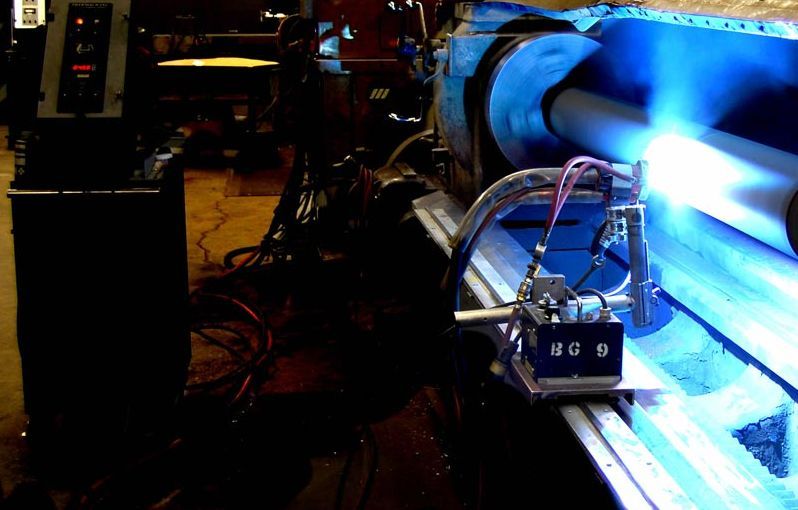Full-Service Supplier of Thermal Spray Coating, Laser Cladding, and Machining
Ceramic Coatings for Wear Resistance: An Overview of Common Types Used in Thermal Spraying
Ceramic coatings have long been known for their durability, wear resistance, and high-temperature properties. When it comes to wear resistance, these coatings are particularly effective in applications where materials require high hardness, protection from erosion, or chemical resistance. Plasma thermal spray coatings are the most common type of ceramic coating used in wear-resistant applications. These coatings consist of a thin layer of densely packed sprayed particles which lock together due to the high temperature and pressure created by the plasma arc. The resulting coating is highly resistant to abrasion, corrosion, and oxidation, even at extremely high temperatures.
There are several types of ceramic coatings used in
thermal spraying, each with unique properties that make them suitable for different applications. In this article, we'll provide an overview of some of the most common types of ceramic coatings used for wear resistance in thermal spraying.

Alumina
Alumina is a frequent solution for several coating challenges. It is harder than many other ceramic coatings, is an excellent electrical insulator, and the nearly pure white coating can be polished to a good finish. It is often used when electrical isolation is required and where high abrasion resistance is needed.It is also frequently preferred when the coated surface will be visible because of its clean white color.
Coatings of alumina are especially useful in corona treating applications, due to their uniform insulation properties and high wear resistance.
Chrome Oxide
Chrome oxide is a popular ceramic coating due to its high level of wear resistance and low coefficient of friction. It is applied where high-speed rotation is required, such as on bearing surfaces and lip seals, where it can help to reduce friction and minimize wear.
Along with it's wear-resistant properties, chrome oxide is also resistant to oxidation and chemical attack, making it an excellent choice for rotary seal applications in fluid handling equipment. Chrome oxide is comparable to alumina in hardness, but is typically capable of being ground to finer finishes than coatings of alumina.
Titanium Dioxide
Titanium dioxide shares many physical similarities with alumina and chrome oxide, though it is slightly less hard than both of these and is typically easier to grind and polish. Like the other ceramics, it is non-corroding and
electrically insulating. Due to its lower hardness, it is often preferred in applications where continuous motion or high-speed contact is less likely.
The ability to grind titanium dioxide to fine finishes makes this coating an ideal mating surface for valve components. Moving and stationary items like balls and seats can both be coated with titanium dioxide and lapped to a precision fit and finish. The two mating surfaces can move freely against one another without galling because there is no metallic material and no opportunity for adhesive wear.
Zirconia
Zirconia is an off-white ceramic with a substantially higher melting point than most other ceramic materials. It is hard and brittle, but its extraordinarily high melting point makes it ideal for thermal insulating applications. For this use, coatings are often applied with an intentionally porous or open structure to minimize the available pathway for heat transfer from the surface of the coating to the substrate. Since the operating environment for these applications is typically open, with only air or hot gas in contact with the coated surface, the lower wear resistance of zirconia coatings is typically not a concern.
Coatings of yttria stabilized zirconia or magnesia zirconia are ideal
thermal barrier coatings in the combustion and hot gas path components of turbine engines, where their thermal insulating properties protect metal components from the extreme temperatures of combustion and permit the turbine to be run hotter and at higher power than would be possible without this protection.
These are just a few of the many types of ceramic coatings used in
thermal spraying for wear resistance. Each type offers its own unique benefits and can be tailored to fit specific requirements. When selecting the right coating for your application, it's important to consider all of the factors such as temperature,
abrasion resistance,
corrosion resistance, and
electrical insulation. With the right combination of these properties, you can ensure that your components remain in top condition even in the most extreme conditions.
About Hayden Corp.
Hayden Corp. offers a wide range of ceramic coatings for wear resistance and other applications. Our experienced team can help guide you in selecting the coating that is best suited to your application, so you get the highest performance out of your component parts. Contact us today (413) 734-4981 for more information or request a quote online.
Questions?
Our staff is always available to answer your questions.
Categories
Tough Coatings for Harsh Environments
The Northeast's only full-service supplier of thermal spray coating, hardface welding, and machining. Your application is tough - and your market is even tougher. Our solutions-based expert team of craftsmen and technicians know the best solutions that affect your parts.
MENU

